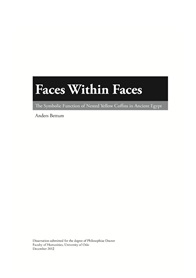| Main » Ad Board » ДРЕВЕН ЕГИПЕТ И АФРИКА » Изкуство |
Anders Bettum - Faces within Faces
| 04.08.2020, 10:01 | |
Дисертация от университета в Осло, проучваща подробно вмъкваните един в друг комплекти от саркофази, навлезли в употреба през епохата на Новото царство и особено през периода на Рамесидите (XIII-X в. пр. н.е.). Направленията на анализ включват типологизация, художествена направа, сакрални функции и символика. - на английски език, от Academia.Edu, формат PDF.Сваляне с ляв бутон (downloading by left button) и после през бутона Download. Academia.Edu изисква регистрация или влизане през Фейсбук/Google акаунт за сваляне на файловете/ Academia.Edu needs a registration (you can use the Facebook or Google account) for downloading. АЛТЕРНАТИВЕН ЛИНК / ALTERNATIVE LINK: - на английски език, от Google Drive,формат PDF. Сваляне с ляв бутон (downloading by left button) от страницата на предоставящия сървър, после през бутона стрелка надолу/after by down arrow button.
| |
| Views: 792 | Placed till: 04.09.2020 | Rating: 0.0/0 | |

